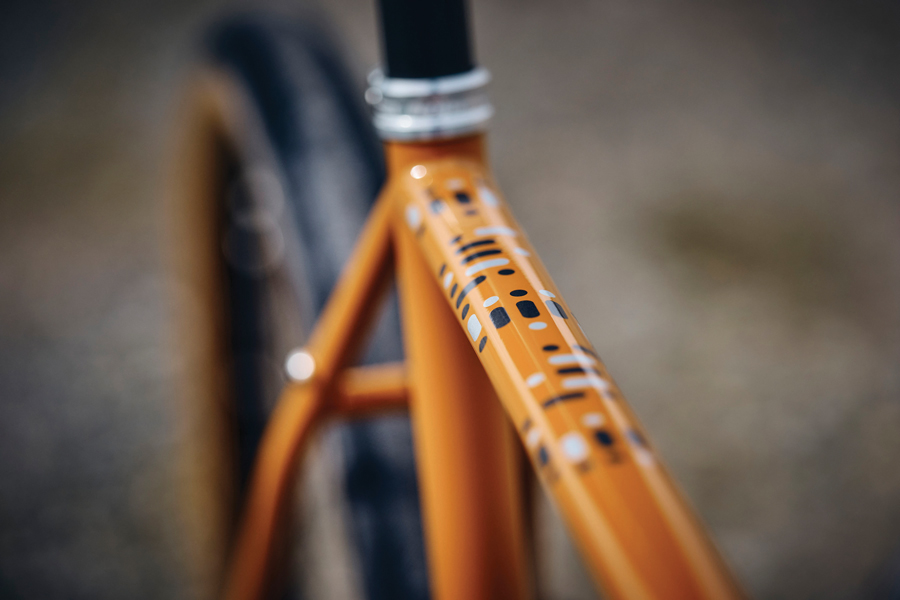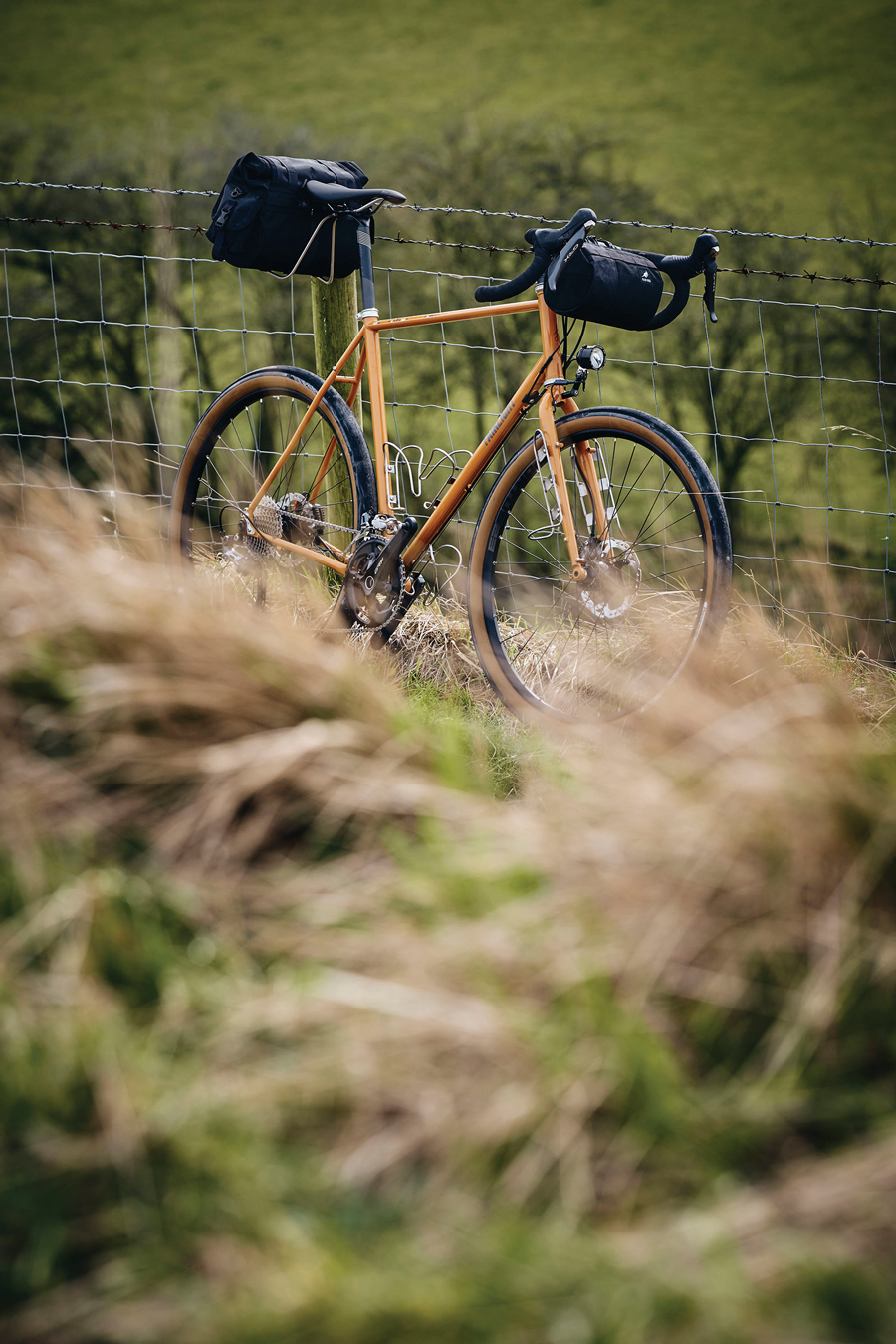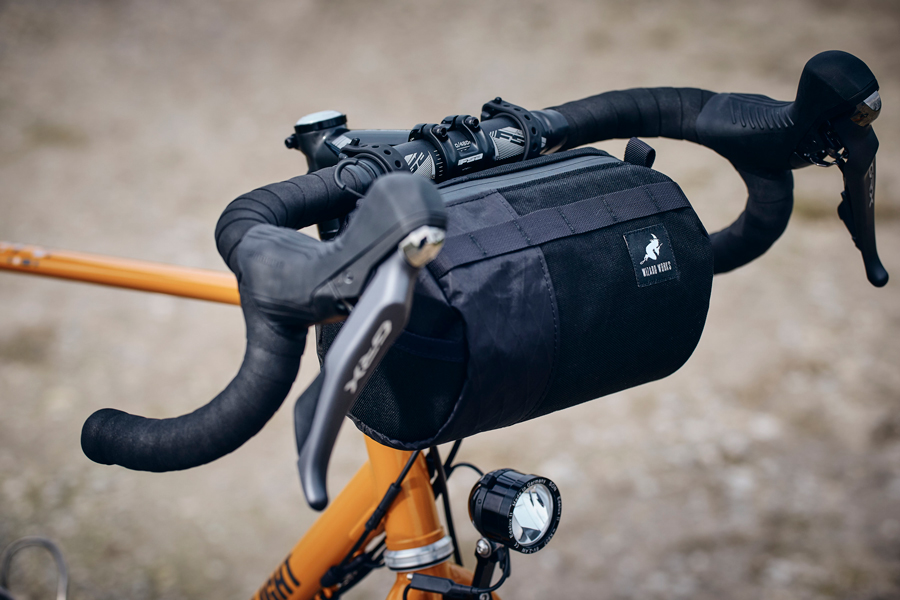Road Test: Fairlight Faran 2.5
This article first appeared in the September/October 2023 issue of Adventure Cyclist magazine.
Fairlight is a small British bike company based in London. They offer only a few models — road, gravel, touring, and mountain — and deal only in steel frames. Fairlight isn’t a custom builder with an 18-month lead time, though, and its bikes aren’t meant for display cases. The frames are built in Taiwan and central Europe, and the prices are reasonable. Fairlight makes its intentions clear on its website: “Our bicycles are tools, not trophies. Designed for transport, recreation, exploration, and enjoyment. They should be ridden hard, used, and cherished.” That’s a brand ethos I can get behind.
The Faran 2.5 is Fairlight’s do-it-all touring bike, and at first glance it doesn’t look much different from other touring bikes. It has a steel frame, a steel fork, a smattering of braze-ons for racks and bottle cages, and some very nice-looking paint. But look more closely, and you’ll see the brand’s attention to detail. For example, the bottle cage mounts on the underside of the down tube include spacers so as to not interfere with the brake and cable routing. The braze-ons on the fork are arranged so that you can mount a rando rack and cargo cages without interference. You can install a low-rider front rack and full-length fenders without needing to share braze-ons. If you like to see at night, the Faran has internal dynamo light routing front and rear and can mount the rear light on the driveside or non-driveside depending on which side of the road you ride. And that’s not even getting into things like tire clearance (there’s a lot of it).

If that’s not enough, navigate your way to Fairlight’s website and peruse the Detailed Design Notes for the Faran. Inside this PDF document, you’ll get a close look behind the scenes at every aspect of the Faran, including but not limited to the exact tubing spec, pictures of wheels and tires mounted to show clearance (including a digital caliper readout), and several paragraphs about the lovely CNC-machined Bentley dropouts. There’s a section about the modular cable guides explaining which guides to use for which setup — 1x, 2x, wireless, dropper post — to have the cleanest routing possible. Want to know the diameter and wall thickness for the top tube of a size 58T? Want to know whether the rear triangle is heat treated and why? Want to know what inspired the graphics design? It’s all there and more.
The Faran 2.5 I tested came equipped with Fairlight’s Shimano GRX600 build kit with the optional dynamo and lighting upgrade. The drivetrain is a familiar mishmash of GRX spec, and it’s a good one: 46/30T crank and 11–34T cassette for low gearing, GRX810 derailers, and GRX400 hydraulic brakes for strong, reliable stopping. For wheels, Fairlight stuck with a local brand: UK-based Hope makes good stuff. The RS4 rear hub offers quick engagement, not too much noise, and is easy to work on. The Fortus rims were new to me, and they were invisible, which I mean as a high compliment. I’m a big fan of the 650b “Road Plus” wheel/tire spec, and that’s what I requested for the Faran, but you can also go with 700c. Of course, the SON dynamo hub up front powered the lights and did so without fail. Believe it or not, this was my first time riding a bike with dynamo lighting, and I loved the ability to wheel the bike out for a ride without having to stop and think about whether my lights were charged. Assuming you’re willing to shell out for the upcharge (£666, or about $860 at the time of writing), dynamo lighting is well worth it.

The rest of the build kit included Panaracer GravelKing SK 48mm tires, an FSA Adventure Compact handlebar (which I found very comfortable), and alloy stem and seatpost, also from FSA. Oh, and a Fabric saddle that I didn’t get along with, but that’s saddles for you. Note that there’s nothing particularly fancy in this build: there’s no carbon fiber, no titanium, nothing very expensive or lightweight. It’s a workhorse build, and saddle aside, I wouldn’t change a thing. That said, let’s look at a couple of figures: the price and the weight. Remember that bit about no carbon, no titanium? I weighed this bike at a little under 25 pounds without pedals, which, considering there’s a dynamo hub and some lights included in there, is remarkable for a non-custom bike with a steel frame and fork. And what does a light steel bike with a great build cost you? A mere 2,400 pounds sterling, which at the time of writing comes to about 3,100 American dollars. You’ll still have to shell out for shipping, taxes, and duty fees, but even so, I think the Faran is a bargain.
Getting your hands on a Faran is easy enough — all you need is legal tender and an internet connection. It’s available in 51cm, 54cm, 56cm, 58cm, and 61cm, all in either Regular or Tall (Tall sizes have longer head tubes and higher stack heights). Upon inquiring, Fairlight will ask you nicely to provide some sizing data. You can either fill out their online fit guide, input figures from a professional bike fit, or take measurements from a current bike of yours that fits well. From there, they’ll give you a couple of options for the best fit and make recommendations for things like handlebar width and stem length. Then you’ll pick which build kit you want (you can also buy a frameset) and select from options like dynamo lighting, wheels, and headset upgrades. As soon as you put down your deposit, it’s off to the races. Fairlight ships via DHL, which may as well be the Millennium Falcon for parcel shipping. The Faran I tested only took a few days to get from the UK to my home office in Salt Lake City. Upon arrival, the bike was pre-built (with some disassembly for shipping) with nary a loose bolt.

During my time with the Faran 2.5, I treated it like my daily, do-everything bike: I pedaled it on local paved roads and singletrack, group social rides around town, to pubs and restaurants, and up and down the canyon roads of the Wasatch Front. I even rode the Faran on my seasonal pilgrimage up Big Cottonwood Canyon to Brighton Ski Resort. It’s a big early season ride with an unending climb followed by a ripping descent that, because of vehicles and rockfall, require you to be on your toes. Even with the efficiency losses of flat pedals and knobby tires, I felt fresh on the climb, and on the descent the Faran was both stable at speed and nimble when I needed to dart around surprise detritus. Similarly, I had a blast riding the Fairlight on some of the mellower local singletrack trails in the foothills. Charging down a rocky trail is a great way to test for frame compliance!
Up to this point, I was enjoying my time on the Faran, but it wasn’t quite blowing my mind. In fact, it felt very, very similar to my personal do-everything steel bike, albeit with some nicer touches in terms of fender and rack fitment. Then I loaded it up for an overnight with friends and discovered what really sets this bike apart. Unloaded, the Faran felt fast, springy, and comfortable, exactly what you want from a nice steel bike, but nothing you can’t get from a lot of other brands (including my personal bike). But with a full camping load? Simply put, the Faran exhibited unmatched ride quality. It still felt fast and springy, but the level of compliance and comfort I experienced was nothing short of remarkable. Not only that, it felt even more stable at speed and in corners. With the weight biased to the front, I could take my hands off the bar and confidently cruise along without even thinking about making micro-adjustments. Speeding down the canyon road, there wasn’t a hint of wobble or wiggle. It’s as if Fairlight created the perfect touring frame.

To what can we attribute this magical ride quality? Fairlight claims a certain amount of compliance from the ovalized top tube, which is something I’ve seen from a few other British bike brands. Surely the bike’s geometry plays a role as well, especially the fork trail. If you’re familiar with randonneuring bikes, you’ve likely heard the term “low trail.” Without going too far into the weeds, low-trail forks tend to feel twitchy unloaded. Fairlight designed the Faran with “mid-low trail,” meaning the steering feels sharp and nimble unloaded but, like a rando bike, settles down when you’ve got some weight on the fork. It’s a good balance, and I think it has a lot to do with the Faran’s stability when loaded up with camping gear. I also think Fairlight found some sorcery in its carefully chosen tubing diameters and wall thicknesses. On its website and in its documents, Fairlight places a lot of emphasis on the tubing it sources from UK-based Reynolds. Whether it’s the tubing or the geometry or all of the above, the Faran’s ride quality is pure witchcraft.
Fairlight Faran 2.5
General
Best uses: Fully loaded touring, gravel, road, commuting
Price: £2,416 ($3,100 at current exchange rate), not including shipping, taxes, and duty fees
Weight: 24.8 lbs. (without pedals)
Available sizes: 51cm, 54cm, 56cm, 58cm, 61cm; (Regular or Tall)
Size tested: 56R
Contact: fairlightcycles.com
Components
Frame: Fairlight Faran 2.5, Reynolds 631 steel, three bottle mounts, rack and fender mounts, internal dynamo light routing, Di2 routing
Fork: Fairlight Faran 2.0 steel, rack and fender mounts, triple mounts, internal dynamo light routing
Handlebar: FSA Adventure Compact, 440mm
Crankset: Shimano GRX600, 46/30T
Wheels: Hope RS4 rear hub, SON dynamo front hub, Hope Fortus 23 rims, tubeless ready
Brakes: Shimano GRX400 hydraulic disc
Derailers: Shimano GRX810
Shifters: Shimano GRX600
Lights: SON front and rear
Tires: Panaracer GravelKing SK, 650b x 48mm, tubeless ready
Tire clearance: 1x: 650b x 60mm or 700c x 50mm; 2x: 650b x 57mm or 700c x 47mm; 1x with fenders: 650b x 55mm or 700c x 45mm; 2x with fenders: 650b x 48mm or 700c x 42mm
Color: Winter Bracken

